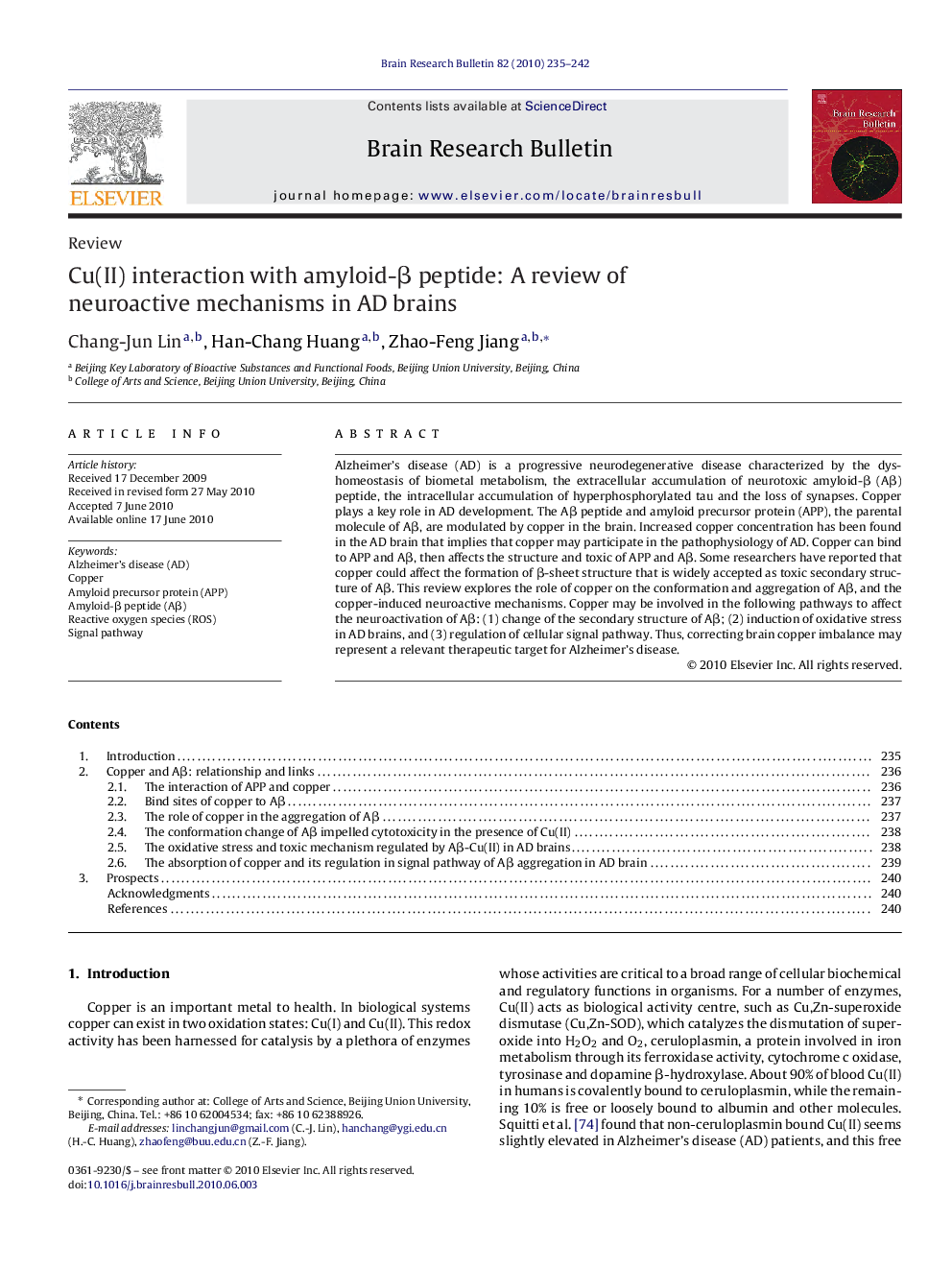| کد مقاله | کد نشریه | سال انتشار | مقاله انگلیسی | نسخه تمام متن |
|---|---|---|---|---|
| 4319203 | 1613280 | 2010 | 8 صفحه PDF | دانلود رایگان |

Alzheimer's disease (AD) is a progressive neurodegenerative disease characterized by the dys-homeostasis of biometal metabolism, the extracellular accumulation of neurotoxic amyloid-β (Aβ) peptide, the intracellular accumulation of hyperphosphorylated tau and the loss of synapses. Copper plays a key role in AD development. The Aβ peptide and amyloid precursor protein (APP), the parental molecule of Aβ, are modulated by copper in the brain. Increased copper concentration has been found in the AD brain that implies that copper may participate in the pathophysiology of AD. Copper can bind to APP and Aβ, then affects the structure and toxic of APP and Aβ. Some researchers have reported that copper could affect the formation of β-sheet structure that is widely accepted as toxic secondary structure of Aβ. This review explores the role of copper on the conformation and aggregation of Aβ, and the copper-induced neuroactive mechanisms. Copper may be involved in the following pathways to affect the neuroactivation of Aβ: (1) change of the secondary structure of Aβ; (2) induction of oxidative stress in AD brains, and (3) regulation of cellular signal pathway. Thus, correcting brain copper imbalance may represent a relevant therapeutic target for Alzheimer's disease.
Journal: Brain Research Bulletin - Volume 82, Issues 5–6, 30 July 2010, Pages 235–242